Science
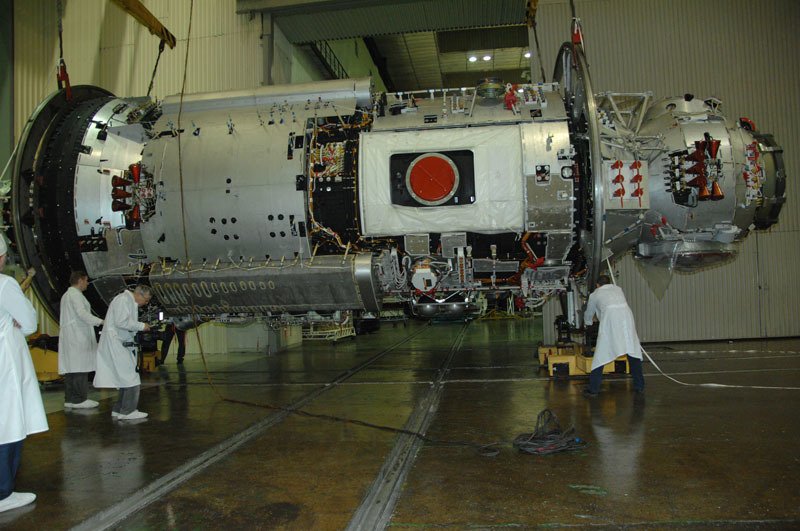
Module “Science”, photo RSC Energia
Facts and chronology
In 2013, the assembled module “Science” began to be prepared for launching, but it failed to receive acceptance testing in the RSC Energia – in the pipelines, metal shavings were found. Module in 2015 returned to the Center. Khrunichev, the pipelines were replaced, but in the spring of 2017 pollution was found already in the tanks. Plans to launch the module in 2018 are now unworkable, and in early April there was even news that “Science” generally can be canceled. At the end of April, two weeks will elapse, taken to assess the condition of the module’s systems, and some new solution may be announced.
Why does it take so long to eliminate pollution and why have not tanks been replaced? Unlike serial household units, this is not so easy. But in order to understand this, it is necessary to plunge into the history of the creation of “Science.”
As a truck became stations
In the best traditions of epic narratives, our story begins already in 1969. OKB-52 Chelomey, the creator of the Proton LV, developed the military orbital stations Almaz. Their main task was photographing the Earth in various spectra, and, consequently, a large amount of film that had to be returned to Earth. The original project of 1966 wanted to use the modification of the Soyuz spacecraft, but even so far the Soyuz has very little opportunity to return the cargo. The heavy Proton could put twenty tons into orbit, three times more than the Soyuz carrier rocket, which led the Soyuz ship, so in 1969 it was decided to make a new manned spacecraft. This is how the Supply ship was born.

TKS section, NASA / David S.F. Portree
The large carrying capacity of the “Proton” made it possible to create a heavy ship of two parts – the return unit (VA) and the functional-cargo block (FGB). A curious detail – the device to be returned was planned to be used repeatedly, and during the test, two VAs flew into space twice.
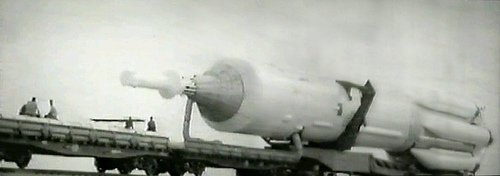
TKS on the Proton rocket, the spire on the left – the rescue system
No TKS was launched with the crew, mainly because the toxic fuel of the Proton booster rocket required much more serious security measures in preparation for the launch and created major problems in the event of an accident in the first seconds of flight – the returned vehicle could not fly far And on the ground could be covered with vapors of not burnt fuel. But as cargo ships TKS flew repeatedly. And on the basis of the already completed design of the FGB began to make modules of the orbital stations. TKS docked with the Salyut-7 station and worked it as a module.
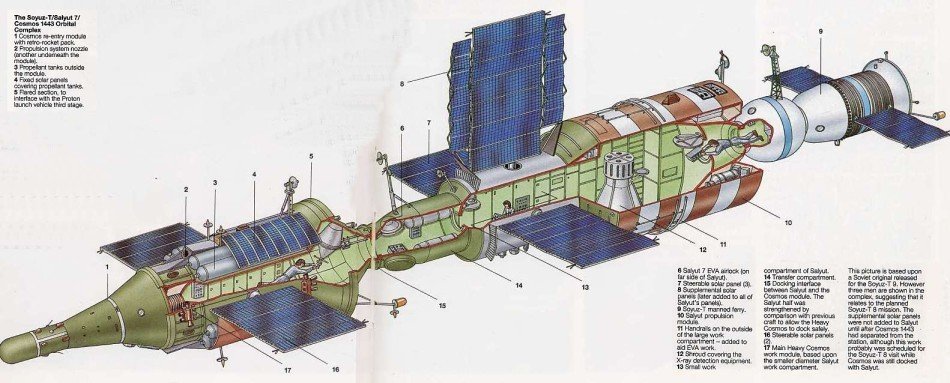
TKS, Salyut-7 and docked Soyuz, in a larger size
]
The FGB became modules for the Mir station and served as tugs that led and docked other modules.

1 – TKS, 2 – TSS-based tug and module “Quantum”, 3 – module “Quantum-2”, drawing of Mikhail Shmitov, “Technique of Youth” 2004 №9
At the beginning of the 90s, the FGB remained two. Of the one made FGB “Dawn” – the first module of the ISS. The latter was first reserved for the accident of the Dawn, and as a result, the module “Nauka” began to make it.
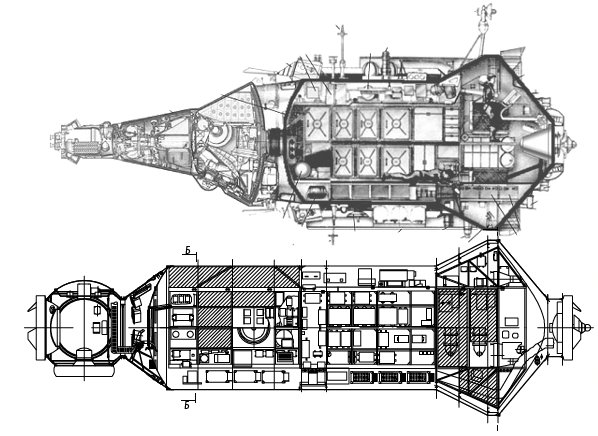
TCS and FGB “Zarya”, scheme from the Airbase Forum
Industrial archeology of bayans
In the original design of the FGB six long and narrow tanks 77KM-6127-0. In two, the pressurized gas is stored under high pressure, four more store fuel and an oxidizer with a total mass of 2432 kg. The small diameter of the tanks made it possible to place radiators of the heat exchange system above them and not to go beyond the maximum diameter of 4.1 m.
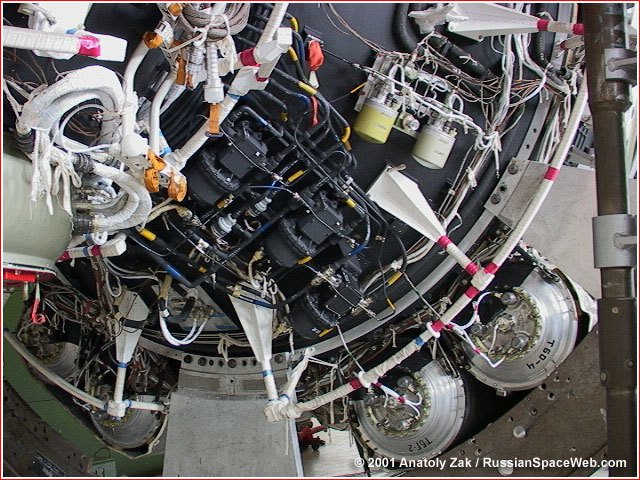
View of the tank’s end, Anatoly Zak’s photo / russianspaceweb.com
]
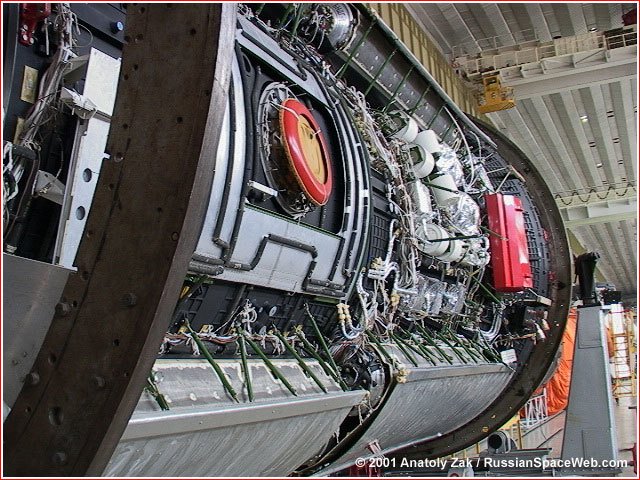
Tanks under the radiators, photo by Anatoly Zak / russianspaceweb.com
Structurally these are not just tanks, but complex aggregates with a partition in the form of a bellows (accordion) Between the fuel component and the boost gas. The bellows, converging and diverging like harmonica bellows, allows the diaphragm to move inside the tank, which makes it possible to repeatedly refuel it from transport vehicles already in orbit.
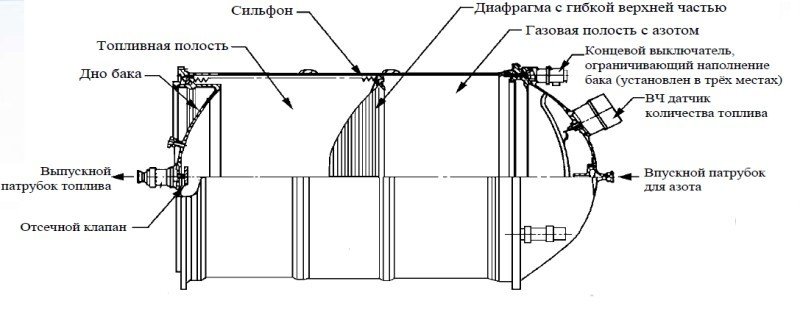
Tank scheme, . V.A. Solov’ev
The tanks were produced in the 1980s, nothing remained of the equipment on which they were made, the production chains were destroyed after the collapse of the USSR, and new ones would have to be made from scratch. When contamination got into them – it is not known, it could have been brought back in the 90’s, and people who made a mistake or negligence, at least do not work, and someone is already possible and is not alive. Just wash the tanks will not work – because of the complex shape of the pollution will be removed only in parts. What to do?
When the FGB was preparing for the role of the backup “Dawn”, other, shorter tanks were installed on it. “Dawn” was not maneuvering actively for docking, it was caught by Space Shuttle, so the volume of fuel could be reduced.
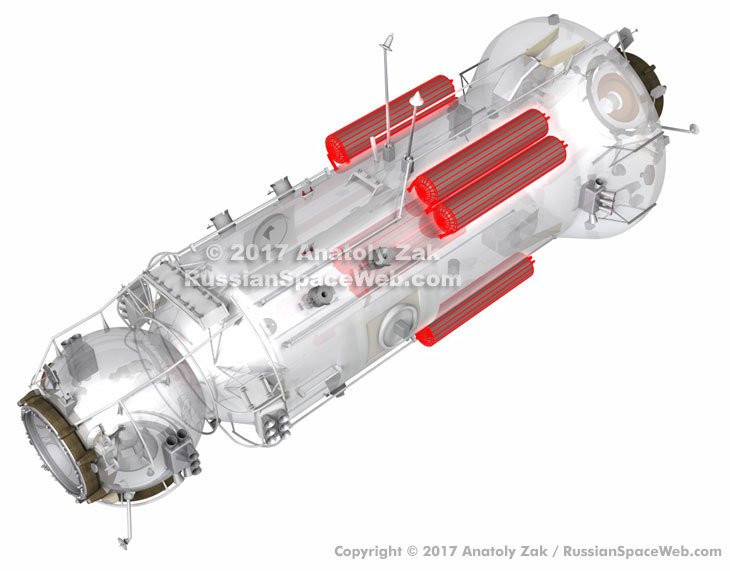
Variant with shortened tanks, Anatoly Zak’s model / russianspaceweb.com
Then the shorter tanks were removed, and one option after finding the problem would be to put them again. This option has disappeared, because in the shortened tanks also found contamination. Indirectly it confirms the version that it was brought there in the 90’s, but it does not make it any easier for us. Another variant was considered with the simultaneous use of long and short tanks, but it also fell off altogether.
A new ISS scientific and energy module is being developed in Russia, and it also has fuel tanks. And what if I put them?
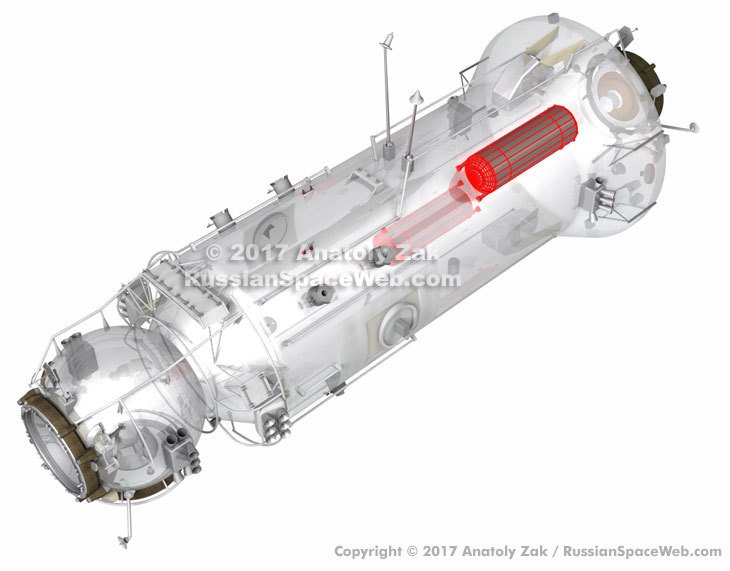
Variant with pots from NEM, Anatoly Zak’s model / russianspaceweb.com
But, alas, the new tanks of the larger Diameter and do not fit under the radiators of the heat exchange system. And if you raise the radiators higher, the module’s diameter will be more than 4.1 m, and you will have to do a new fairing for the Proton launch vehicle, because it will not fit the existing module in the width.
Well, We still have Progress transport ships, and you can try taking the tanks from there. Tanks are produced serially, they are small, but they can be taken a lot, this is not a problem. 19459008 19459002 19459005 A variant with tanks from Progress, Anatoly Zak’s model / russianspaceweb.com
But this option did not fit – the tanks of Progress are larger in diameter, and they will require the solution of the same problems as radiators and fairings with the tanks of the NEM. Plus, they were not developed for multiple refueling, and the problem of impossibility to refuel them in orbit may arise.
As a result, according to Anatoly Zak’s information, they decided to open the original tanks along the longitudinal axis and clean them neatly. This operation should give access to complex bellows bellows for cleaning, and will not require new unique details – it is possible to cut and weld tanks on existing equipment.
The result
The sad story of “Science”, in my opinion, shows the boundaries of technological progress, which are rarely considered. Unlike a computer game where the technology is not going anywhere, in reality it is very easy after a certain level to roll back and lose the ability to make the designs that were mass-produced decades ago. And the history of “Science” begins to resemble the lost technology of the carrier rockets “Energy” or “Saturn-V”
Similar stories by tag “imperceptible difficulties”








